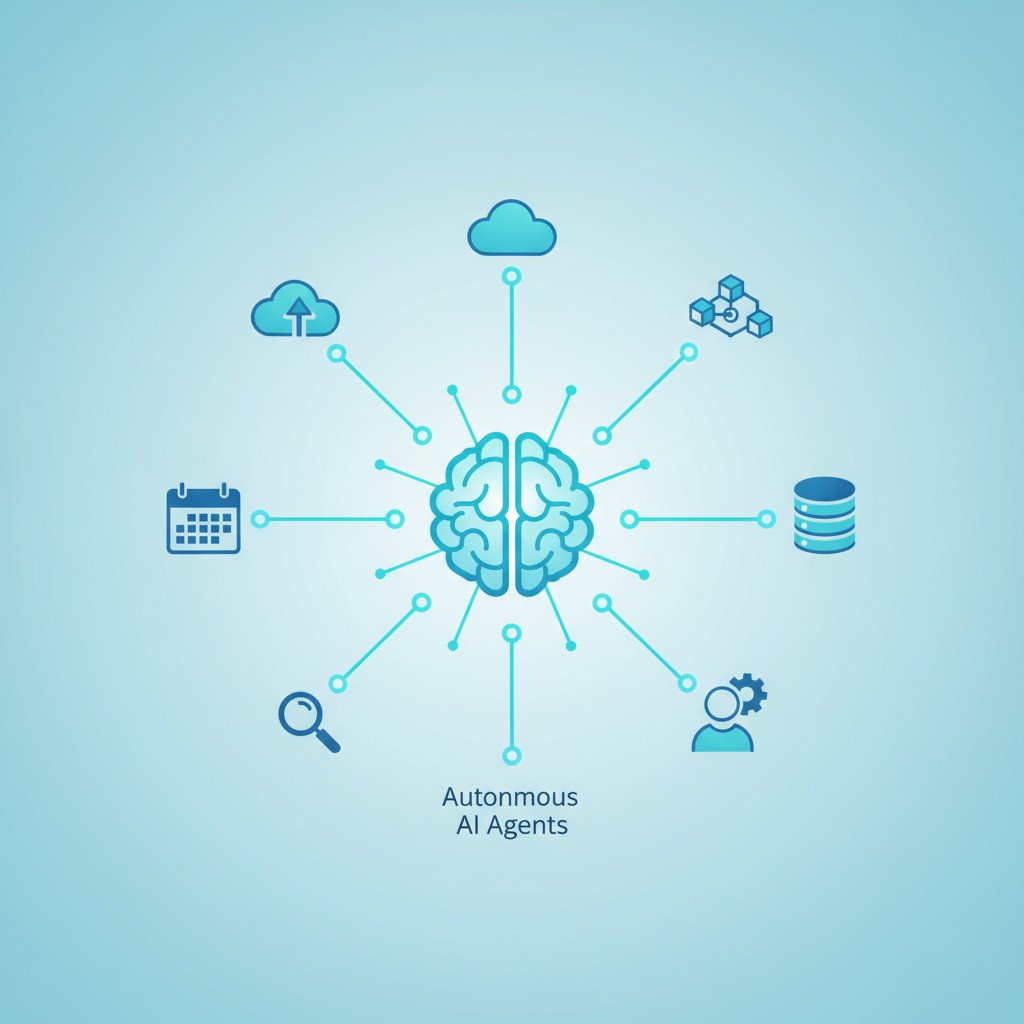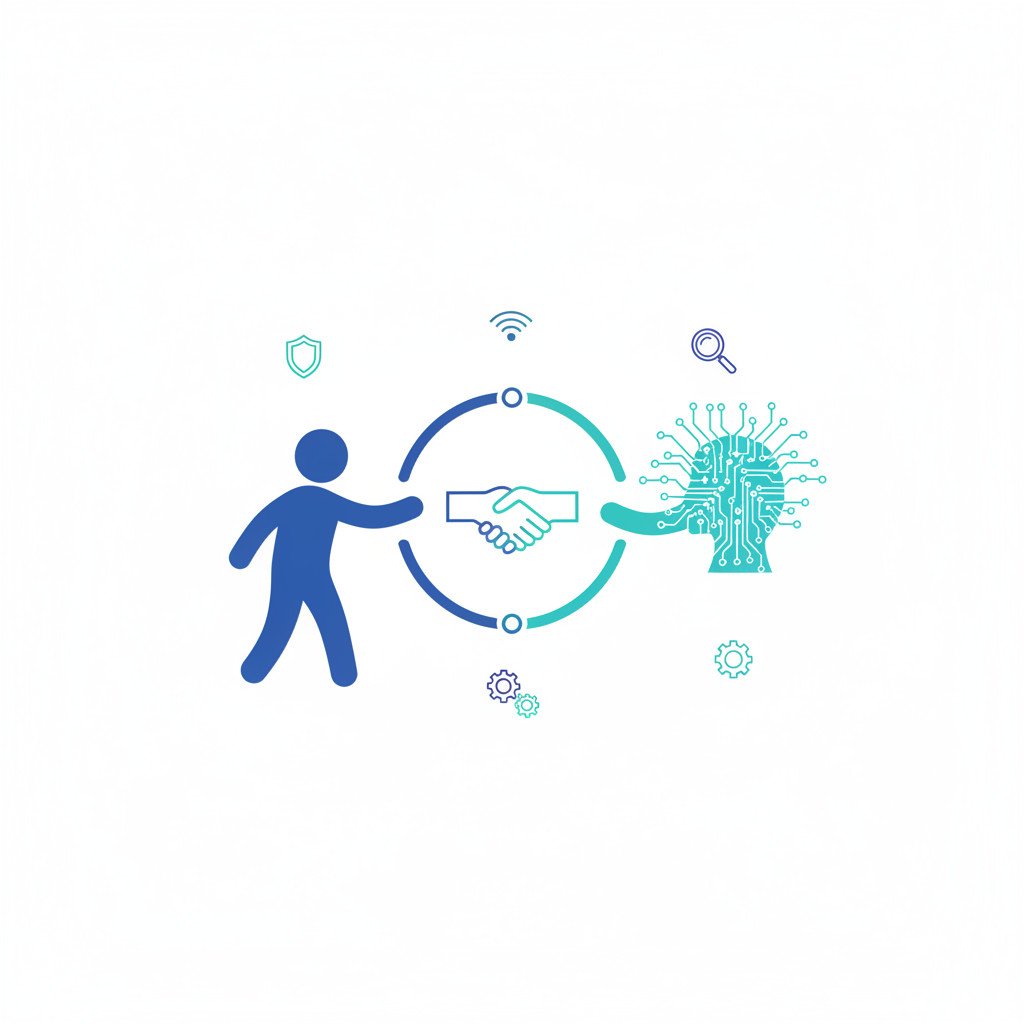Agentic AI: From Assistant to Autonomous Action
Imagine software that thinks ahead, takes steps, and completes tasks without constant human instruction. Agentic AI describes systems built to set goals, plan steps, and act across tools and workflows. Because these systems do more than generate answers, they change how companies design processes and measure value. As a result, enterprises must rethink governance, data quality, and change management to capture real benefits.
This article explains why agentic AI matters now. First, it shows how agentic orchestration can extend automation beyond scripts and rules. Next, it covers the non AI groundwork that makes agents reliable and safe. Finally, it offers practical steps to prepare teams, tools, and data so agentic automation delivers measurable impact in production.
Why act today rather than later? New models and multi agent patterns make action oriented AI possible at scale. However, technology alone will not create value. Clean data, clear processes, and process intelligence must come first because agents will amplify existing problems if those foundations are weak. Therefore, enterprises that invest in end to end workflows and human in the loop design will see faster, safer outcomes.
Over the next sections you will read about governance frameworks, testing strategies such as agentic testing, and organizational changes that support mixed workforces. You will also find examples of how to connect agents to the web, use QA patterns, and measure success. In addition, the article highlights practical tools and patterns that reduce risk while accelerating deployment.
If you want to move from experiments to production, this guide gives concrete actions and roadmaps. Read on to learn how your company can prepare people, processes, and platforms so agentic AI becomes a source of sustained business value.
agentic AI Defined and Its Key Features
Agentic AI refers to systems that do more than answer questions. Instead, they set goals, plan steps, and take actions across tools and systems. Because these systems act end to end, they shift how organizations design workflows and measure value. Therefore, understanding their defining features helps teams prepare the right people, data, and governance.
Core features that distinguish agentic AI from other AI types include
- Goal driven autonomy. Agentic systems accept objectives and pursue them without constant prompting. They break goals into tasks and sequence steps to reach outcomes.
- Planning and memory. Agents create short term plans and use memory to track progress. As a result, they handle multi step work and follow through on commitments.
- Tool use and integration. Agents call APIs, operate applications, and orchestrate services to complete work. For example, they can book meetings, update databases, and trigger automations.
- Multi agent coordination. Agents can work with other agents and humans to solve complex problems. Meanwhile, patterns for coordination make distributed work reliable.
- Observability and safety. Agentic AI requires logging, auditing, and guardrails. Therefore, governance, explainability, and human in the loop controls remain essential.
- Adaptation and learning. Agents refine behavior based on feedback and new data. Because they act in production, they must learn safely and predictably.
For practical patterns, see research on multi agent pipelines and coordination, including multi agent design patterns such as the peer pattern and approaches to connecting agents to the web. These resources help teams turn prototypes into resilient systems ready for enterprise scale.
Why agentic AI matters in modern technology
Agentic AI matters because it turns passive models into active contributors. In short, these systems plan, act, and complete work across tools. As a result, they change how companies scale automation and measure outcomes. Therefore, leaders must consider not just models but end to end systems, governance, and human oversight.
Industries transform when agents take on repeatable, decision heavy tasks. For example:
- Customer service. Agentic agents handle triage, escalate issues, and update CRM records. Consequently, teams spend less time on clerical work and more on complex cases.
- Finance and accounting. Agents reconcile transactions, flag anomalies, and trigger downstream approvals. Because they act automatically, cycle times shrink and audits become clearer.
- Supply chain and logistics. Agents coordinate shipments, rebook carriers, and adjust inventory forecasts. As a result, companies improve on time delivery and reduce waste.
- Software delivery and ops. Agents run tests, deploy services, and roll back changes when needed. Therefore, engineering teams move faster with fewer manual checkpoints.
Real world patterns and research already show where agentic AI unlocks value. For multi agent research and orchestration, see practical pipelines and designs that scale experiments into production Unlocking the Future: How AI Powered Multi Agent Research Pipelines Are Revolutionizing Insights. In addition, design patterns such as the PEER model guide safe coordination between agents and humans Revolutionize Your AI Projects: Harness the Power of the PEER Pattern for Multi Agent Systems. Finally, connecting agents to the web expands their capabilities and data access, enabling richer automation The $25 Million Revolution: Connecting the Next Billion AI Agents to the Web.
However, technology alone does not guarantee impact. A recent industry analysis highlights that most generative AI pilots fail to produce measurable returns, often because they ignore workflow integration and data readiness. For context, review reporting on that MIT analysis and its implications for enterprise adoption Tom’s Hardware coverage.
Because agents amplify existing processes, foundations like data quality, process intelligence, governance, and human in the loop design matter more than ever. Therefore, companies that invest in non AI groundwork will capture more value and reduce deployment risk.

agentic AI versus traditional AI: a concise comparison
Below is a clear table comparing agentic AI to traditional AI across key attributes. Use this to spot where agentic orchestration changes requirements for people, processes, and platforms.
| Attribute | agentic AI | Traditional AI |
|---|---|---|
| Autonomy | High autonomy. Agents set goals and act with minimal prompts. | Low to medium autonomy. Models need frequent human direction. |
| Decision making capability | Makes sequential decisions and executes actions across systems. | Primarily provides predictions or recommendations. Humans act on outputs. |
| Adaptability and learning | Adapts in production via feedback loops and controlled learning. | Learns in training phases, then stays mostly static in production. |
| Application areas | End to end workflows, orchestration, automation, and multi agent systems. | Analytics, classification, prediction, and assisted decision support. |
| Integration and tool use | Natively uses APIs, apps, and automation tools to complete tasks. | Often packaged as models or services needing custom integration. |
| Interaction model | Mixed workforce focus: agents collaborate with humans and other agents. | Human centric: users consume outputs and take action. |
| Observability and governance | Requires detailed logging, audit trails, and runtime guardrails. | Requires model monitoring and version control, but fewer runtime controls. |
| Testing and validation | Needs agentic testing, scenario based QA, and safety checks. | Relies on model evaluation metrics and offline validation. |
| Typical impact | Can reduce cycle times and automate complex workflows. As a result, it amplifies process issues if foundations are weak. | Improves insights and decisions, but often stops short of full automation. |
| Risk profile | Higher operational risk without strong data and governance. Therefore, foundations matter. | Lower operational risk but still vulnerable to bias and drift. |
This table highlights differences that affect governance, data quality, and change management. Consequently, prepare non AI groundwork before scaling agentic AI in production.
Practical applications of agentic AI
Agentic AI unlocks active automation across industries. Because agents plan, act, and learn, they handle tasks that used to need human follow up. Below are practical applications and short descriptions that show where agentic orchestration matters most.
Business operations
- Intelligent process automation. Agents run end to end workflows, trigger Robotic Process Automation tasks, and update systems automatically. As a result, cycle times shorten and manual handoffs drop.
- Sales and CRM orchestration. Agents qualify leads, schedule demos, and update CRM records. Consequently, reps spend more time selling and less time on data entry.
- Finance operations and reconciliation. Agents match transactions, escalate exceptions, and submit approvals. Therefore, close cycles become faster and audits become easier to trace.
Healthcare
- Clinical coordination. Agents manage referrals, follow up on test results, and surface urgent cases to clinicians. Meanwhile, human in the loop review preserves safety and clinical oversight.
- Administrative automation. Agents fill forms, submit claims, and monitor prior authorizations. As a result, staff time shifts toward patient care rather than paperwork.
Robotics and physical systems
- Autonomous logistics. Agents reroute shipments, coordinate warehouse robots, and reassign pick tasks in real time. Consequently, fulfillment adapts to disruptions without manual intervention.
- Collaborative robotics. Agents plan multi step tasks for robot teams and human partners. Therefore, factories gain flexibility and higher throughput.
Software engineering and IT
- Autonomous operations. Agents run tests, promote builds, and roll back faulty releases automatically. As a result, time to detect and fix regressions drops significantly.
- Incident response. Agents triage alerts, gather context, and run remediation playbooks. Meanwhile, engineers retain final authority for critical decisions.
Research and knowledge work
- Multi agent research pipelines. Agents coordinate data collection, run experiments, and synthesize results. Therefore, teams iterate faster and uncover insights at scale.
Caveats and impact data
A MIT analysis shows many generative AI pilots fail to deliver measurable impact. Therefore, enterprises must invest in data quality, governance, and process intelligence before scaling agents. Agentic AI multiplies both benefits and risks, so foundations matter more than ever.
In short, agentic AI has broad practical value. However, to capture that value, teams must pair agents with strong governance, testing, and change management. Doing so turns agentic automation into repeatable business advantage.
Challenges and ethical considerations of agentic AI
Agentic AI brings powerful capabilities. However, those capabilities introduce new risks. Because agents can act autonomously, they change who is accountable for decisions. Therefore, organizations must plan governance and oversight before deployment.
Key technical and operational challenges
- Accountability and control. Who owns an agent’s decisions? When agents act, logs and audit trails must show intent and steps. As a result, organizations need clear responsibility frameworks and escalation paths.
- Data quality and bias. An AI agent is only as good as the data it runs on, which means biased data leads to biased actions. Consequently, robust data governance, cleaning, and bias testing are essential.
- Safety and unpredictability. Agents plan multi step work and can pursue unexpected paths. Therefore, runtime guardrails, sandboxing, and fail safe controls must limit harmful behavior.
- Integration and fragile workflows. Agents amplify existing process flaws. For that reason, teams must map workflows, identify weak points, and fix them before scaling.
Ethical and societal considerations
- Privacy and confidentiality. Agents may access sensitive data across systems. As a result, strict access controls, encryption, and consent mechanisms are critical.
- Fairness and transparency. Stakeholders expect explainable decisions. Therefore, systems should produce human readable rationales and decision traces.
- Human oversight and mixed workforces. Agents should complement humans, not replace essential judgment. For example, use human in the loop for high risk decisions.
Expert viewpoints and practical guidance
“AI that doesn’t just generate answers, but takes action, makes decisions, and uses tools to get things done,” highlights why control matters. In addition, “The non AI work is what will set enterprises up for success,” so foundations must come first.
In short, agentic AI can deliver value. However, responsible adoption demands governance, testing, and continuous monitoring. Therefore, invest in non AI groundwork to reduce risk and build trust.

Future prospects and innovations in agentic AI
Agentic AI will evolve from experimental pilots into business critical platforms. Because agents act and integrate across systems, future advances will focus on coordination, safety, and scale. Therefore, enterprises must watch trends in models, orchestration, and governance to stay competitive.
Key trends and innovations to expect
- Larger context and memory systems. Agents will keep richer short and long term memory. As a result, they will manage longer workflows and deliver more consistent outcomes.
- Multi agent ecosystems. Agents will coordinate as teams, not as isolated tools. For example, peer patterns and choreographed workflows will let specialized agents collaborate on complex tasks.
- Seamless tool and API integration. Agents will natively call services, update records, and interact with human workflows. Consequently, automation will move from point solutions to end to end orchestration.
- Safer online learning and adaptation. New methods will allow agents to learn from feedback safely. Meanwhile, runtime guardrails will reduce drift and limit risky behaviors.
- On device and edge agents. For privacy and latency reasons, agents will run close to data sources. Therefore, industries like healthcare and manufacturing will gain faster, more private automation.
- Advanced agentic testing and validation. Tooling will evolve to simulate scenarios and verify behaviors. As a result, teams will deploy agents with higher confidence.
Implications for enterprises
Innovation will create new capabilities and new responsibilities. However, technology alone will not deliver value. Because agents amplify processes, prepare data, governance, and change management first. In addition, invest in monitoring and agentic testing to catch failures early. Finally, continuously refine roles so humans and agents form effective mixed workforces.
Conclusion: 3 Step Enterprise Checklist to Deploy Agentic AI Safely
Agentic AI shifts models from suggestions to actions. To capture value while reducing risk, follow this concise enterprise checklist that emphasizes data readiness, governance, and safe pilots.
1 Assess data readiness and process intelligence
- Inventory data sources and evaluate data quality, completeness, and lineage for model training and runtime decisions
- Clean, label, and enforce data governance, privacy controls, and access management
- Related keywords: data quality, data readiness, data governance, process mapping, data lineage
2 Define governance, roles, and observability
- Establish AI governance, assign owners, and create accountability for agent actions and audits
- Implement logging, explainability, monitoring, and risk management processes
- Related keywords: AI governance, risk management, explainability, audit trail, accountability
3 Pilot with guardrails and human in the loop
- Run scoped pilots with clear success metrics, rollback plans, and runtime guardrails
- Use human review for high risk decisions and iterate based on measured outcomes and monitoring signals
- Related keywords: pilot, guardrails, human oversight, agentic testing, observability
For practical next steps, consult the NIST AI Risk Management Framework and Playbook for templates, controls, and implementation guidance: NIST AI Risk Management Framework.

